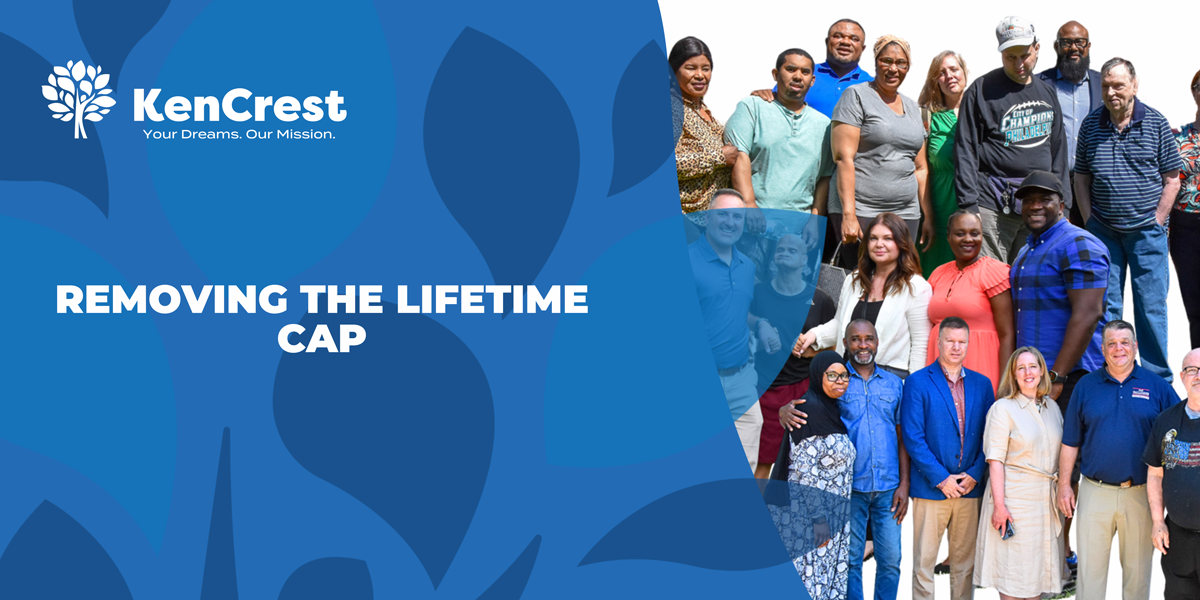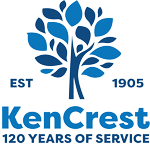
KenCrest fights to remove the Lifetime Cap on Assistive Technology in Pennsylvania to continue helping people with IDD.
By Sydney Kerelo
For more than a year, KenCrest has been at the forefront of the battle to remove the Lifetime Cap on Enabling Technology in Pennsylvania. This cap limits the investment in life-enhancing devices for individuals with intellectual or developmental disabilities to $10,000 throughout a person’s life, which is a substantially low number compared to the rising cost of living and technological advancements.
“We want to remove the term ‘Lifetime’ from the Pennsylvania cap on Assistive Technology,” says Director of Government Relations & Advocacy Chip Riddleberger. “Other states, have removed the lifetime cap and made it a two to three-year cap of $5,000 to $6,000 instead. So, after two to three years, the individual would get another $5,000 to spend. We think this is something Pennsylvania should consider because, as we age, we require more support, and having a lifetime cap will prevent us from adequately allotting that money to the individual's needs.
At KenCrest, most of the people we support depend on Enabling Technology devices to enhance their quality of life, independence, and dignity. Take Ryan, for instance. He used to struggle with showering alone, often forgetting specific steps. But with the help of KenCrest’s Enabling Technology team, he now has an Amazon Echo Dot and a Flic Wireless Button, enabling him to hear guided directions for showering with just a press of a button.
“Enabling Technology even offers smart faucets and toilets which allows people to toilet independently,” says Gregg Kelinson, Vice President of Innovation. “Having someone help you in the bathroom can be uncomfortable, and having devices like this can help them regain their dignity and independence and boost their self-esteem.”

Another individual, Patricia, who is a wheelchair user, wanted to live independently but struggled to reach countertops, clean her floors, or open doors for herself. However, since Enabling Technology's intervention, she now has an automatic door opener, ADA-compliant countertops, and a specialized Roomba that vacuums and mops her floors for her. She was able to move into her own apartment and live independently because of the supports she received.
However, the life-changing impact of these devices is accompanied by a significant financial strain. The cost of Enabling Technology devices can quickly add up, making them unaffordable for many individuals in need. For example, a motorized wheelchair can cost up to $4,000. This is why the policy needs to be revised.
“For people who can’t ambulate to eat, there is a machine called an Obi, an adaptive eating device with five compartments in a bowl, with an electronic arm connected to a spoon. All the person has to do is open their mouth, and the machine will pick up the food and place it in your mouth,” says Kelinson. “But although this device helps people eat independently, it’s $8,000. Yes, there are more inexpensive devices like the Amazon Alexa’s and ring cameras, but even with those, they add up over time.”
KenCrest opened its first Smarter Living Home last year to showcase the technology devices people can purchase to assist with daily living. The house was a former group home that was vacant when the Director of Operations Supports, Kellie Smith, and the Director of Infrastructure & Security, Tim Bosch, decided to revamp it for a new purpose.

This home showcases various devices and accessibility features like tilt mirrors, motion-activated faucets, smart toothbrushes, and more. There is even a combination washer-dryer unit for easy access and various GrandCare Tablets to conduct health monitoring with a blood pressure cuff, thermometer, etc. The device can create tasks, provide guided prompts, and display reminders.
Having this home is especially helpful as the people KenCrest supports age and need new technology. After seeing an urgent need for Enabling Technology within the greater community, KenCrest now also supports older Pennsylvanians who do not have a disability but who are in need of adaptive devices.
“person’s needs in their 20s or 30s could potentially be very different from what they could need in their 50s or 60s,” says Riddleberger. “So, from a health perspective, having a lifetime cap of $10,000 doesn't make sense when expenses are rising and needs change throughout a person’s life.”
KenCrest has hosted several Pennsylvania representatives at the Smarter Living Home, including . Plus, more than 100 visits from KenCrest staff members and people served to showcase what these devices can do to change someone’s life for the better.
“Assistive technology can be quite costly, and having a Lifetime Cap of $10,000 can become hard to stay within,” says Riddleberger. “So we want to discuss with our representatives the idea of removing the Lifetime cap because it should be about the quality of a person’s life, increasing their independence and increasing their inclusion in the community, and Enabling Technology can do that."
Consider what you can do to help those with an intellectual or developmental disability live more independently within their community. How can you help us fight to remove the lifetime cap?
